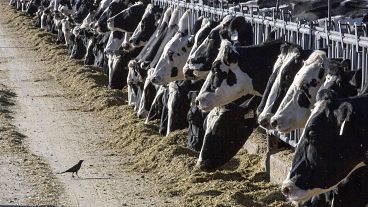For the first time since 1960, the number of live births in the EU has fallen below 4 million, one of the lowest fertility rates in the world.
In 2022, the number of live births in the European Union reached its lowest level since 1960, according to the latest available data. That year, only 3.88 million babies were born in the EU, marking the first time the figure fell below 4 million.
The fertility rate also declined, nearing levels last seen two decades ago. The EU had one of the lowest fertility rates in the world, defined as the number of live births per woman.
How do fertility rates compare across different parts of Europe? And how has the fertility rate change in Europe compared to the rest of the world?
There has been a downward trend since 1960 in the number of children born in the EU. The lowest number was recorded in 2022 at 3.88 million.
In 1990, 5.1 million babies were born in the EU, marking the last year that births exceeded 5 million.
Fertility rates vary considerably across Europe
In 2022, the fertility rate, which reflects the number of live births per woman, significantly varied in the EU, ranging from 1.79 in France to 1.08 in Malta according to Eurostat, the statistical office of the EU.
The average for the EU as a whole was 1.46. Including the broader European Free Trade Association (EFTA), the UK, and EU candidate countries, Georgia (1.83) and Moldova (1.81) reported higher rates than France.
While the highest fertility rate is observed in France, a Mediterranean country, other Mediterranean nations like Malta (1.08), Spain (1.16), Italy (1.24), Greece (1.32), and Cyprus (1.37) have notably lower rates.
Slightly higher fertility rates were recorded in countries like Romania (1.71), Turkey (1.63), the UK (1.56), Germany (1.46), and Finland (1.32).
Is the fertility rate in Europe rising or falling ?
Examining the long-term changes in the EU's fertility rate reveals a clear downward trend.
It was 2.35 in 1970, its highest recorded level recorded before slumping to its lowest level in the late 1990s, bottoming out at 1.4 in 1998, according to World Bank data.
It then began to rise gradually, reaching a recent peak of 1.57 in 2016.
In 2022, the total fertility rate in the EU was 1.46 live births per woman, approaching the levels seen in the early 2000s, which were around 1.4.
The fertility rate has changed significantly in EU countries over the last 20 years, decreasing in 13 of the 27 EU Member States between 2002 and 2022.
Ireland and Finland reported the most significant decreases in fertility rates, each dropping by over 0.4 points, corresponding to declines of more than 20 percent.
Conversely, Czechia, Romania, and Bulgaria experienced the highest increases, each rising by more than 35 percent.
This rate remained stable in the EU, with only a 2 percent increase.
The EU has one of the lowest fertility rates in the world
In 2021, the EU reported a fertility rate of 1.52, the lowest after the East Asia and Pacific region, which had a rate of 1.49, according to World Bank data.
Western and Central Africa had the highest fertility rate at 4.98, followed by Eastern and Southern Africa at 4.35 and the Arab world at 3.14.
The global average fertility rate was 2.27, with North Africa and the Middle East reporting a higher rate of 2.63. North America's rate of 1.64 was just above the OECD average of 1.59.
Since 1970, there has been a notable downward trend in fertility rates across almost all regions, although this decline has been significantly slower in Africa.
Fertility rates in all 41 European countries, including EU, EFTA, and candidate countries, are below the global average.



